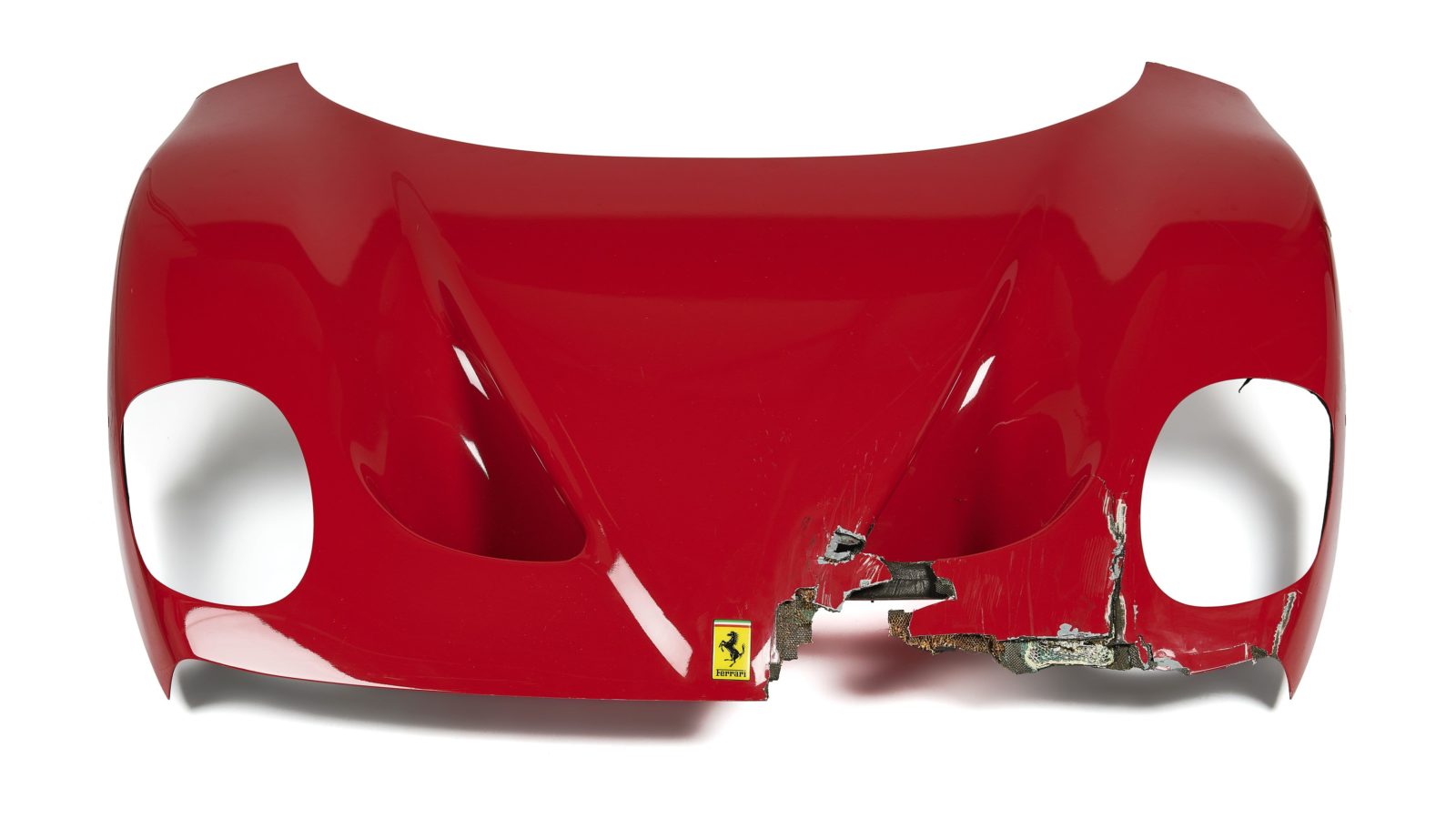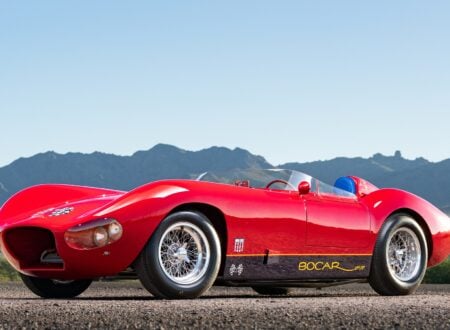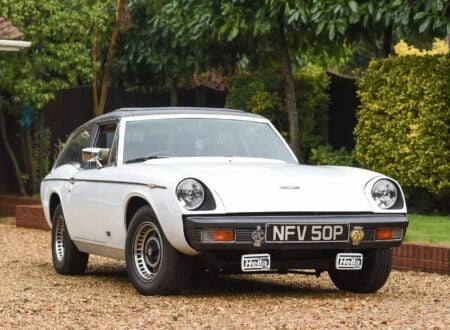This is the front end bodywork from a Ferrari F50 that has obviously suffered a collision and it’s now being offered for sale either as a display piece or as a restoration project for an F50 owner who wants a spare nose.
The Ferrari F50 is notable for a number of reasons, perhaps most notably because it was powered by a modified Formula 1 engine – sourced from the 1990 Ferrari 641 F1 car and then re-engineered for road use.


A version of this engine was originally used in the Ferrari 333 SP that was raced in the American IMSA GT Championship, so Ferrari knew it well, and this would also mean that the engine was eligible as a stock engine in the World Sports Car category.
The Ferrari F50 would be one of the last truly analogue supercars, it had no power steering, no power brakes, and no ABS. It was developed to give the driver a direct connection with the road, with no interference from hydraulics or electronics.
The car has a carbon fiber tub with a body made from a combination of carbon fiber and Nomex. The engine is a mid-mounted 65° V12 with a displacement of 4,698.50 cc (4.7 liters), double overhead cams, four valves per cylinder, and fuel injection producing 512 bhp at 8,000 rpm and 347 lb ft of torque at 6,500 rpm.
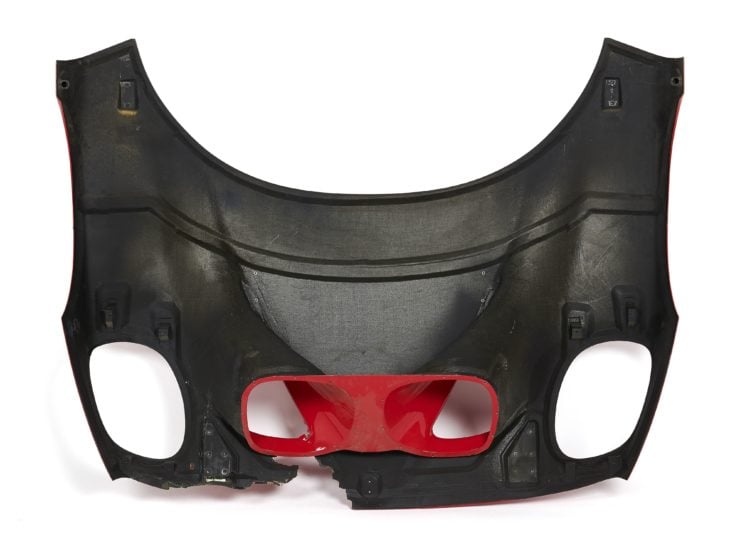

Performance was understandably brisk, the 0 – 60 mph dash could be executed in 3.8 seconds, on to a top speed of 202 mph or 325 km/h.
The Ferrari F50 became one of the great supercars of the 1990s, just 349 of them were made and today they remain among the most collectible Ferraris on earth.
The front nose section of body work you see here is due to be offered for auction by Artcurial on the 16th of October with a price guide of $7,900 – $11,900 USD. If you’d like to read more about it or register to bid you can visit the listing here.
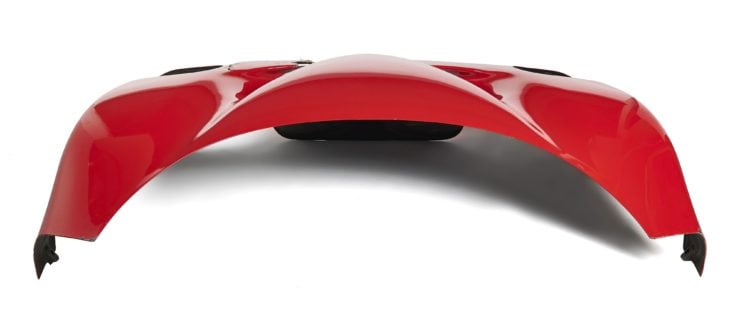
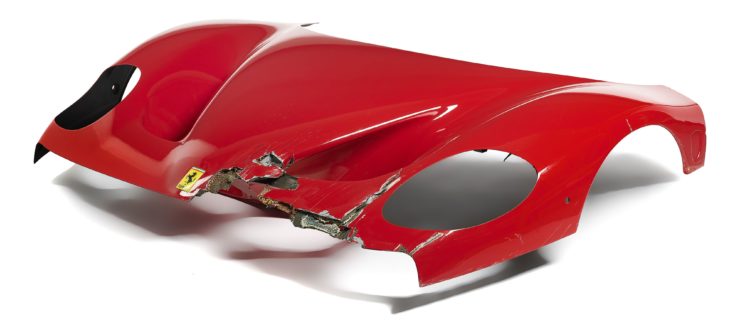
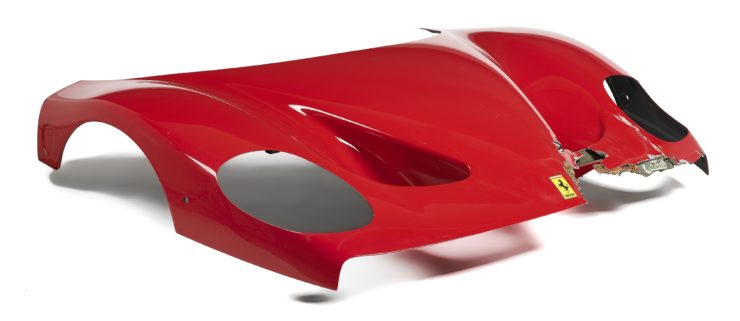
Images courtesy of Artcurial

